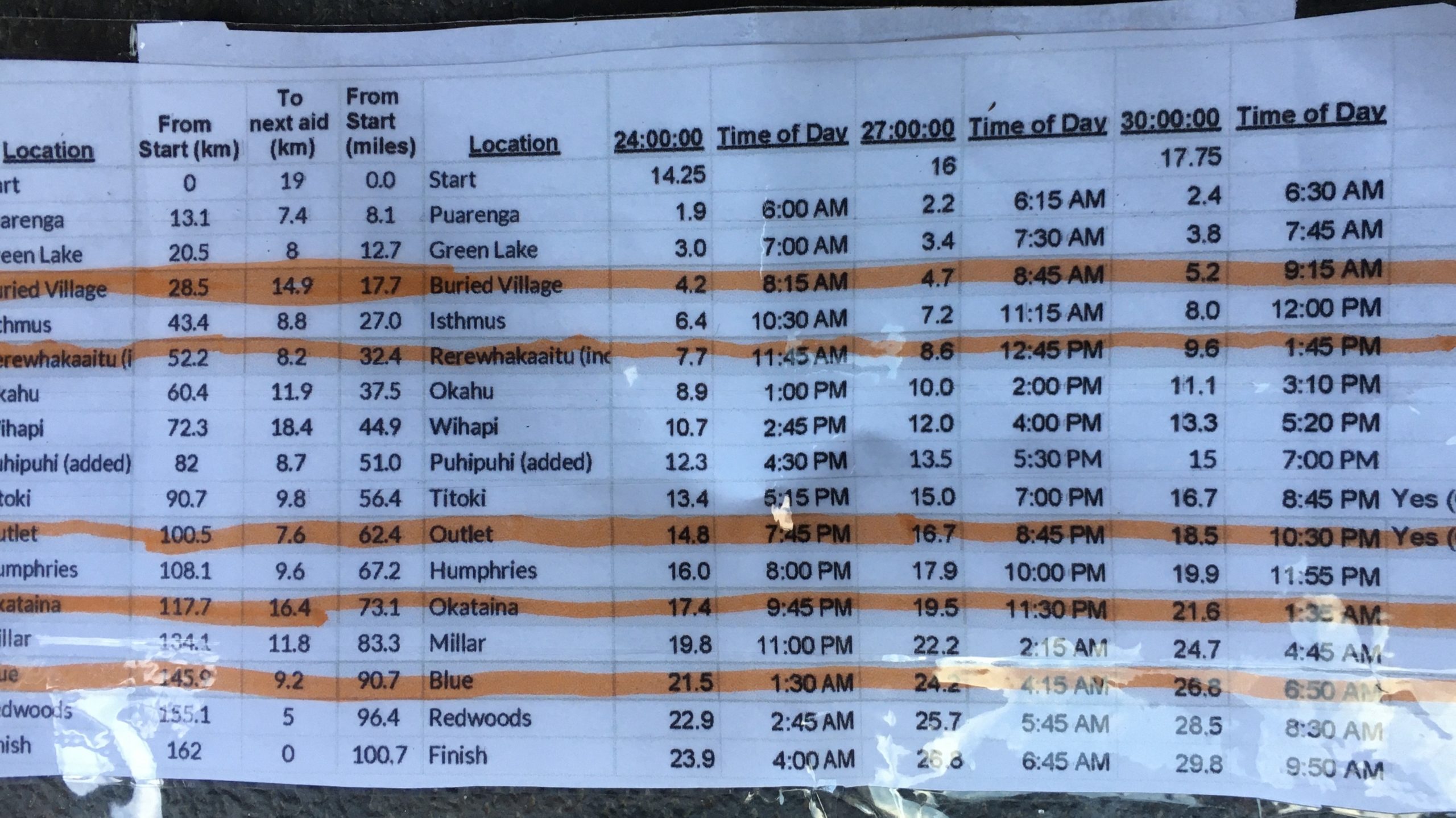28, 2020

Build Your Sales Plan: A Startup Selling Lesson from the Trail
I’m a planner. Months ahead of my ultramarathons, I search for race reports from past years. I research the course and study satellite views of the trail on Google Maps. I look at weather trends so I can plan for hot or cold or rain or snow.
Then I build a spreadsheet that details each race segment from aid station to aid station, including the distance and elevation gain for each section.
Then I research the split times of runners at my estimated pace from previous years, accounting for weather conditions in each previous years’ race. Then I estimate my running times for each section. Then I add columns for “Stretch Goal” times if I’m having the race of my life and a column for “Things-Aren’t-Going-Well-Just-Finish-The-F&cking-Thing” times.
Then I create a laminated card with a miniature version of the spreadsheet and to keep it in my running pack so I can see where I am along the way.
Once I have my race plan built, I put together my drop bags. Most races allow runners to leave drop bags at certain aid stations for whatever they might need along the way – A change of socks. Nutrition. Baby wipes. Ibuprofen. ????
Organizing my drop bag takes me about 8 hours. After looking at where drop bags are allowed and my estimated race times, I calculate how many calories I’ll need for the next section and what to include in each bag. I write out an inventory list for each aid bag and a set of instructions for myself so that when I open the bag on race day, I just have to follow the instructions of what to do.
- Use 2 Tailwind packets for your bottles.
- Pack 6 Tailwind packets in backpack.
- Check feet for blisters. Clean feet and change socks if needed.
- Use the baby wipes to wipe down everything below the equator.
- Eat this bag of Peanut M&Ms
After 14 hours and 62 miles, the last thing I need to do is rely on memory, do any thinking or make any decisions about what to do..
The night before the race, I talk through the race plan with wife – where I expect to be by when so that as she’s tracking me along the course, she knows which race plan I’m on – the expected plan, my stretch goal or the “it’s-going-to-be-a-while” plan. This helps her know when to meet me at certain aid stations for support and what to expect when I get there.
Even with all of this planning, there’s still a chance I won’t finish the race. I might get injured. I might have GI issues. I might take a wrong turn and end up three miles off-course (yes, this happened…). I might have to DNF.
But usually, I do finish the race. Usually, I hit my goal times. At the Tarawera 100 three weeks ago, a 100-mile ultra in New Zealand, my race goal was 27:00:00 (that’s 27 hours).
My finishing time?
26:54:39.
This brings me to the sales lesson…
Do you have a plan for all of your sales opportunities? Do you know the checkpoints along the way to know if you’re on track or off-track, ahead of schedule or behind schedule?
When you’re running your enterprise sales process, you’ve got to have a plan for each account:
- Who are the people that you need to get involved from the prospect’s side?
- Who should you talk with during the needs analysis and qualification process?
- How are you going to customize your product demo for each prospect?
- What sort of objections and questions will you get from IT, Risk, and all of the other “decision-breakers” at your account?
- How will you deliver your solution and map out an implementation plan with your prospect?
If you’re just winging it from meeting to meeting….
If you’re not qualifying your leads and jumping right into a demo with every prospect…
If you’re hoping that the product will do the selling for you…
If you’re hoping that the mid-level manager you demoed can sell up the ladder to their division vice president…
If you’re hoping those executives you’ve never met read the proposal you sent…
If you think the IT team actually knows how to read your API documentation…
If you think that discounting your price is a way to convert your deals…
If you’re doing any of these things, then you don’t have a sales plan.
David Sandler is credited with saying – “If you don’t have a process for selling, you’re at the mercy of your buyer’s process for buying.”
For you and your startup, it’s even worse.
You’ve built a new product that replaces people, manual processes, spreadsheets and Sharepoint. You’re creating a new category.
Your buyers don’t have a process for buying your stuff because they’ve never bought anything like it before. That’s why you have to have a plan and a process for every sales opportunity.
If this sounds familiar at your startup and you want some help, here’s how –
Next month, I’m running a live training on Zoom where we’ll focus on your sales pipeline and process. In the training, we’ll –
- Identify why are your deals are stalling,
- How to get them moving again, and
- How to keep the momentum so that you can convert more deals and hit your Q1 number.
Most importantly, the training will help you diagnose where you have gaps in your sales process so that you can take control of your sales opportunities from the start.
If you’d like to save a spot, just reply back with the word “PLAN” and I’ll send you the details.
Sound like a plan?
-Scott
